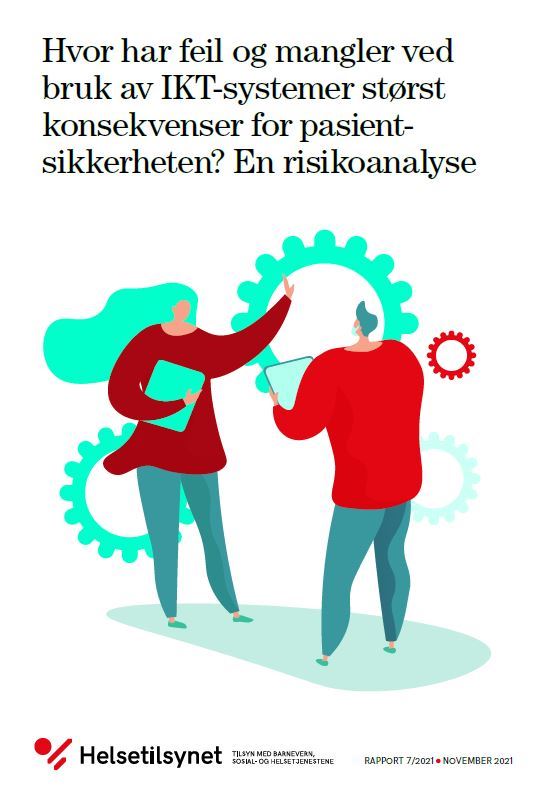Where do errors and deficiencies in the use of ICT systems have the greatest consequences for patient safety?
A risk assessment
Report by the Norwegian Board of Health Supervision 7/2021

Health professionals are entirely dependent on – and at the mercy of – ICT tools for providing appropriate health care. The process of digitalisation of the health service solves many known challenges, but it can also lead to unfortunate incidents.
In order to prioritise future supervisory work in this field, the Norwegian Board of Health Supervision (NBHS) has identified certain areas within patient care where a risk of patient injury arises due to or in connection with the use of ICT. On the basis of the overall knowledge review, a list of nine specified and delimited risks was drawn up, with a corresponding patient history:
- Patient is injured because the treatment provider cannot find their way through the system.
- Patient is injured because the wrong medication is administered, in the wrong dose, in the wrong way, or at the wrong time.
- Patient is injured because critical information is unavailable (downtime).
- Patient is injured because critical information is unavailable (between levels, internally and externally).
- Electronic consultations – critical information is not being disclosed by patients.
- Patient is injured because test results are not followed up.
- Patient is injured due to lack of notification or poor user interface on medical devices.
- Patient records are leaked/sold.
- ICT solutions which cannot be integrated increase the burden on health professionals.
The identified risks have been discussed with a number of specialist panels. Following the discussions within the specialist panels, the NBHS has concluded that, in its further work, it will focus on technology in the field of medicine, on the systems and applications that are used for telemedicine or medical long-distance monitoring, on procedures and systems concerning the follow-up of test results and issues relating to the use of medical devices.
This report is essentially an internal document for use in order to prioritise the supervisory work of the NBHS. It is being published as we believe it can also be used by the health trusts in their own work relating to quality and patient safety.